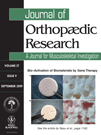Improving clinical significance of PCR: Use of propidium monoazide to distinguish viable from dead staphylococcus aureus and staphylococcus epidermidis
Abstract
Molecular techniques, such as the polymerase chain reaction (PCR) have high sensitivity when used to diagnose infection, but may detect DNA, RNA, and proteins from dead, as well as viable, bacteria. Propidium monoazide (PMA) is a DNA binding agent, that has the ability to penetrate only dead cells with compromised membranes and has been used in conjunction with real-time PCR to distinguish intact from dead bacterial cells. In this study, intact, heat-inactivated (dead), and intact/dead admixed Staphylococcus aureus (S. aureus) and Staphylococcus epidermidis (S. epidermidis) were treated with PMA or left untreated before DNA extraction. We quantified levels of 16S rDNA and tuf gene by real-time quantitative PCR (qPCR), to test the ability of PMA to distinguish intact from dead bacteria. Our results indicated that PMA inhibited detection of dead bacteria, and the qPCR results reflected the number of intact bacteria without being impacted by the presence of the dead bacteria. This approach of combining qPCR with and without PMA treatment has promise to limit false-positive PCR results when used to diagnose infections, but needs to be further validated in clinical samples. © 2009 Orthopaedic Research Society. Published by Wiley Periodicals, Inc. J Orthop Res




